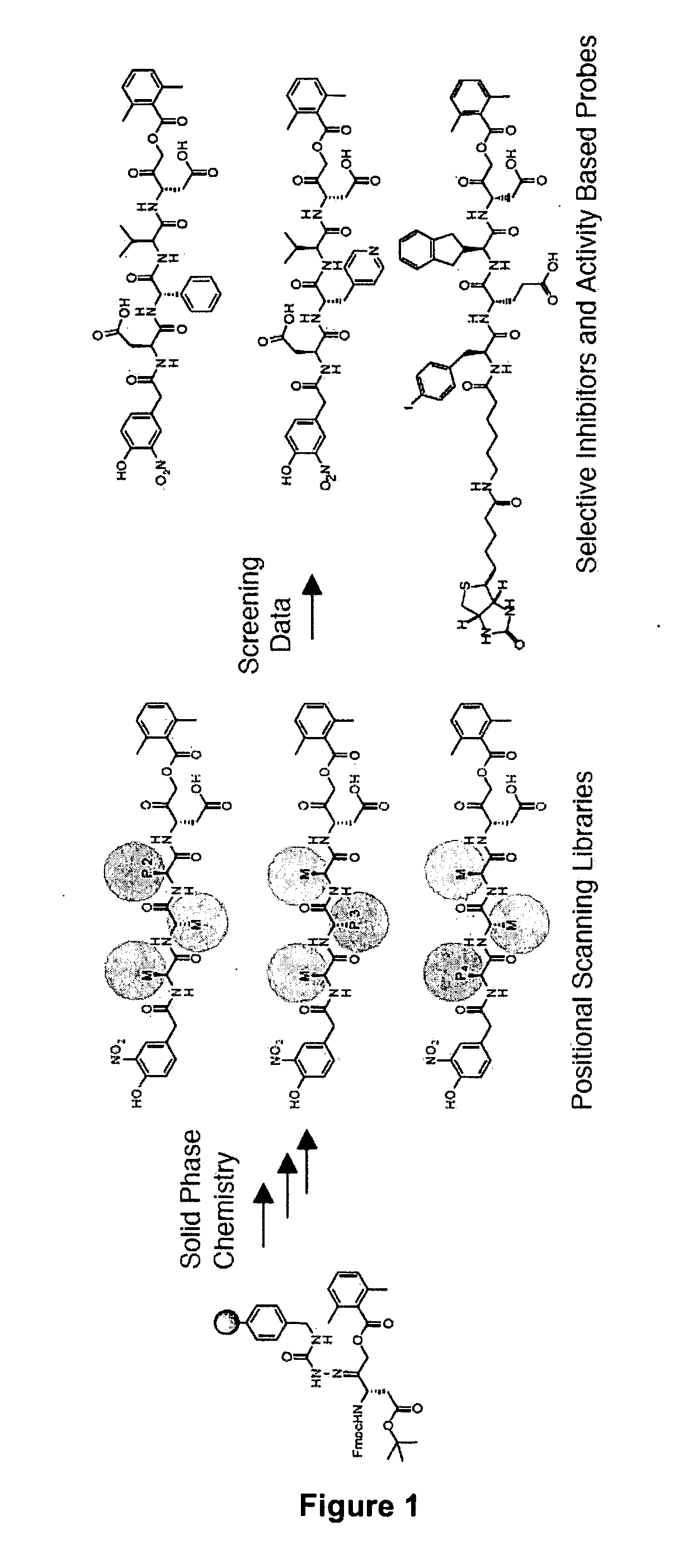Selective Caspase Inhibitors
a caspase inhibitor and selective technology, applied in the field of enzyme inhibition, can solve the problems of difficult to define the contribution of each pathway to apoptosis processes in vivo, prevent the detailed analysis of the kinetics of early activation events, and few tools are available for directly monitoring individual caspase activity in complex proteomes
- Summary
- Abstract
- Description
- Claims
- Application Information
AI Technical Summary
Benefits of technology
Problems solved by technology
Method used
Image
Examples
Embodiment Construction
Overview
[0054]The detailed study of caspase activation during apoptosis requires sensitive tools that can be used to monitor proteases in a highly controlled and temporal fashion. While significant progress has been made towards understanding biochemical properties such as substrate specificity and active site topology of caspases, there remains a lack of effective small molecules to monitor specific caspase targets in the context of a complex proteome, intact cell, or whole organism. While several recent studies have made use of broad-spectrum activity based probes to monitor endogenous caspase activity in intact cells (Denault and Salvesen, 2003; Tu et al., 2006), the overall high reactivity of the probes prevented their use for real-time analysis of caspase activation. Described below are highly selective active site probes and inhibitors that could be used to dissect these specific activation events. Using a positional scanning approach with peptide acyloxymethyl ketones (AOMKs)...
PUM
| Property | Measurement | Unit |
|---|---|---|
| molecular weight | aaaaa | aaaaa |
| temperature | aaaaa | aaaaa |
| temperature | aaaaa | aaaaa |
Abstract
Description
Claims
Application Information
 Login to View More
Login to View More - R&D
- Intellectual Property
- Life Sciences
- Materials
- Tech Scout
- Unparalleled Data Quality
- Higher Quality Content
- 60% Fewer Hallucinations
Browse by: Latest US Patents, China's latest patents, Technical Efficacy Thesaurus, Application Domain, Technology Topic, Popular Technical Reports.
© 2025 PatSnap. All rights reserved.Legal|Privacy policy|Modern Slavery Act Transparency Statement|Sitemap|About US| Contact US: help@patsnap.com



